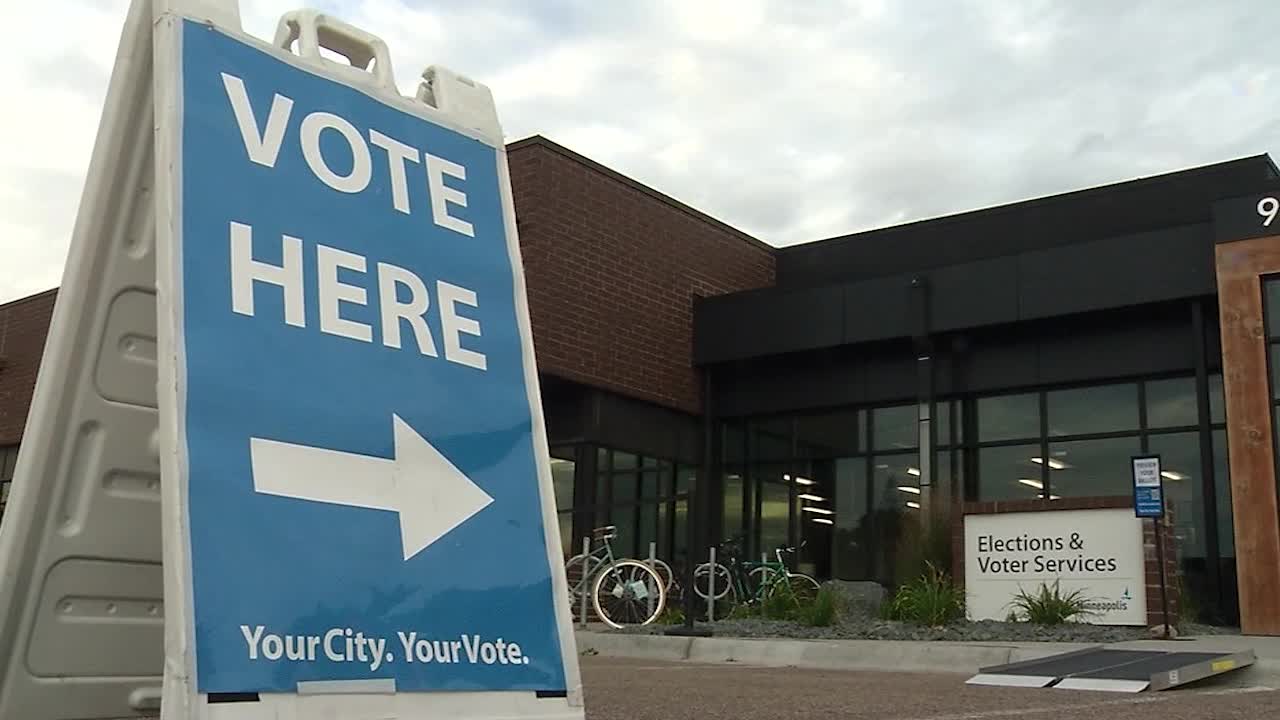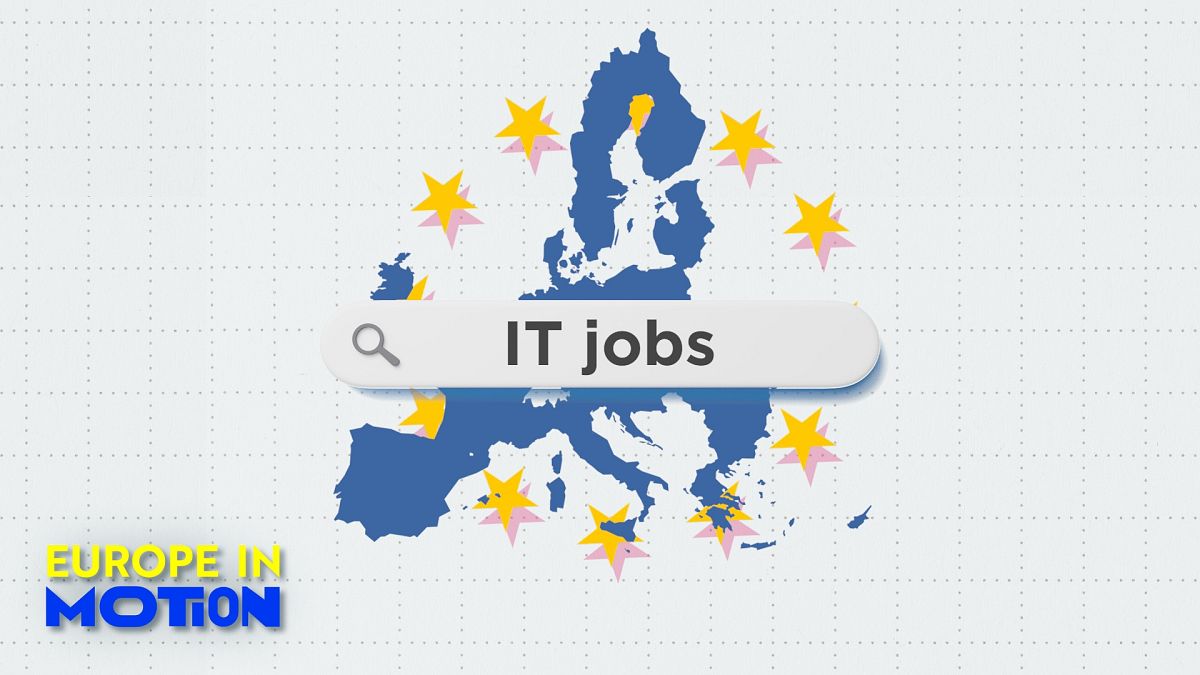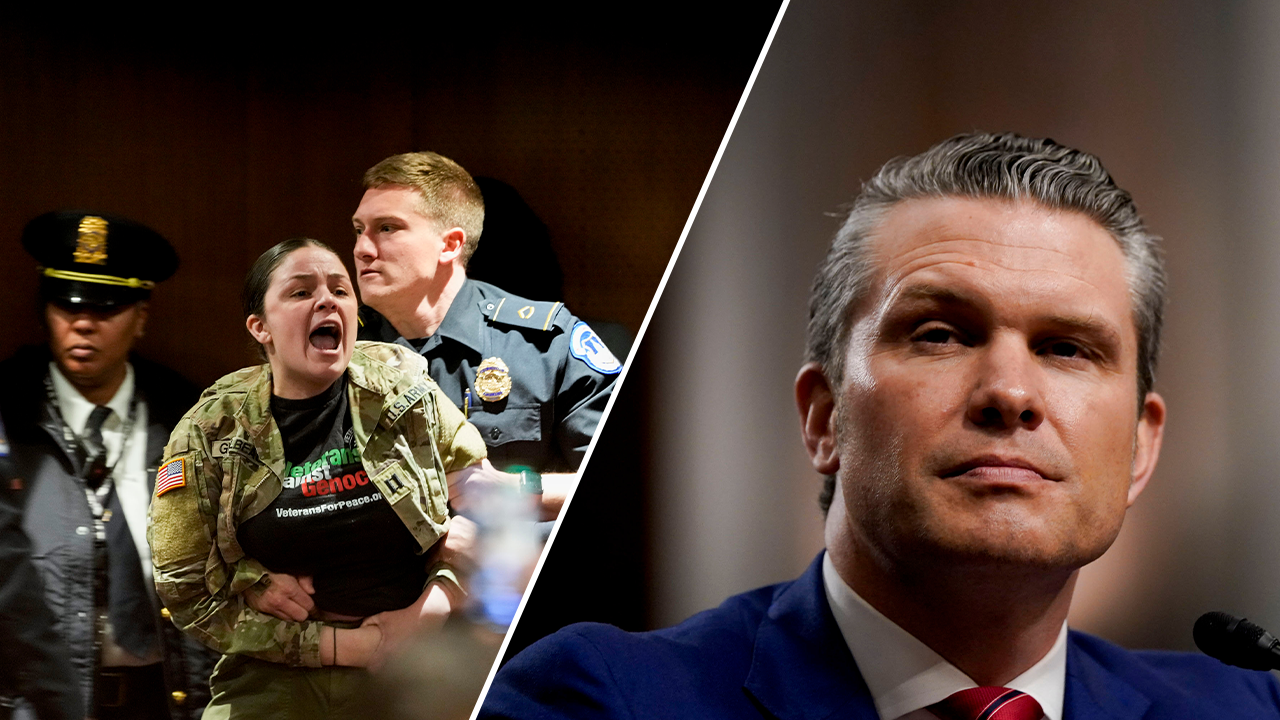Minneapolis, MN
National cigarettes, banned pop songs and memory oceans: Minneapolis Iranian artists show work about diaspora

In the underground gallery of the Q.arma Building in northeast Minneapolis, there is a line of giant stubbed-out cigarettes, all of them glossy and hard ceramic.
Nearby are watercolor prints of Persian calligraphy featuring lyrics by female Iranian pop artists who worked in exile after the Iranian Revolution of 1979. In a back room, artist Shirin Ghoraishi places a virtual reality headset on visitors, chaperoning them through an ocean horizon that leads to a subway car.
This is the show, “So Far, So Close,” featuring Ghoraishi, Ziba Rajabi and Katayoun Amjadi. The artists were all born in Iran.
Artist Shirin Ghoraishi, here with curator and artist Ziba Rajabi, guides guests through her VR experience inspired by dreams and memory. Courtesy of Drew Arrieta
“We all have been living outside of Iran for years,” says Rajabi, who also curated the show. “This is an exhibition that explores the complicated experience of displacement from the motherland through themes of space, distance and memory by three Iranian female artists.”
When breaking news happens, MPR News provides the context you need. Help us meet the significant demands of these newsgathering efforts.
The exhibition was funded by the Twin Cities Iranian Culture Collective and the Minnesota Humanities Center.
Rajabi’s works are the series of watercolor calligraphy. In her artist statement, Rajabi explains that in “the ‘80s and ‘90s, the Islamic regime banned pop music, and the only art and music allowed were war propaganda.”
The pop songs she references in her work come from Iranian artists whose work was smuggled into the country on tapes or VHS. For this show, she focuses on the music of Leila Forouhar, an Iranian woman who fled Iran in the 80s.
The “Forget to Fly” series by artist-curator Ziba Rajabi uses watercolor monotypes of Persian calligraphy “employing verses from pop songs by Iranian female singers who lived and worked in exile after the 1979 [Iranian] Revolution.”
Courtesy of Drew Arrieta

“Her experience of exile was similar,” Rajabi says.
Ghoraishi created a VR experience about reality, dreams and memory and where these areas overlap.
“The audience will see an ocean that is a representation of dreams and memories, which doesn’t mean they are true or not true,” Ghoraishi says. “Sometimes memory tricks us. We remember something that didn’t exist before.”
Ghoraishi ends the user experience by placing them in front of a full-length mirror in a dim room.
“This final moment is a necessary reminder that as an immigrant, we are shaped by what we remember of our past and what we have had to forget,” Ghoraishi says. “The mirror reflects not only the self but the constant negotiation of one’s identity.”
A still from the virtual reality experience “Echoes and Fragments” created by Minneapolis artist Shirin Ghoraishi.
Courtesy of Shirin Ghoraishi

Amjadi created the nine giant ceramic cigarettes. The rest of her installation includes silkscreen prints of cigarette packs as well as two actual cigarette packs encased in a clear box. “Two ordinary cigarette packs picked up from newsstands in Tehran and Jerusalem,” Amjadi wrote in her artist statement.
The brands are Bahman, the national cigarette of Iran, and Alia, a cigarette brand from Palestine that is sold in Israel.
Amjadi says her art investigates “how objects carry memory, and the objects that we collect, especially as souvenirs that we bring from one place to another, are signifiers of memory, nostalgia and also identity are embedded in them.”
Bahman, Amjadi explains, is Farsi for “snow avalanche” and is also the word for February, the month of the 1979 Iranian Revolution.
“Bahman is the month of revolution, a 1979 revolution in Iran that, in a sense, caused the Iranian diaspora,” Amjadi says. “So me and my friends right here would not be here if that event would not have taken place.”
Minneapolis-based Iranian artists Katayoun Amjadi, Shirin Ghoraishi and Ziba Rajabi with moderator Aida Shahghasemi at the opening of the show “So Far So Close” at the Q.arma Underground Gallery in northeast Minneapolis.
Courtesy of Alaleh Naderi

Alia is the Arabic word for “exalted.” Amjadi says it also has the meaning of a return to the Holy Land for the Jewish people. (Aliyah means “ascent” in Hebrew and is used in Judaism to represent both the act of being called to read from the Hebrew Bible and the act of immigrating to Israel.)
“Which is a reverse diaspora but causes another diaspora, a Palestinian diaspora,” she says. “I’m interested in the desires and yearnings of one population for a homeland, for belonging to a place, and how it causes another group to be displaced, and the parities between these diasporas in a way.”
Gallery hours are 1 p.m. to 7 p.m. Saturdays through Tuesdays. Visitors can do the virtual reality experience Saturdays and Sundays from 2 p.m. to 5 p.m. The exhibition will have a closing reception on Sept. 21.

Minneapolis, MN
Votes roll in for Minneapolis’ Senate District 60 special primary

More than a half-dozen people are squaring off Tuesday in a special election primary in Minnesota’s heavily blue Senate District 60 following the December death of Sen. Kari Dziedzic.
The winner of Tuesday’s DFL primary is also expected to win the Jan. 28 general election for the safe blue seat and end a 33-33 tie in the Minnesota Senate.
Polling places are open until 8 p.m. Tuesday.
Doron Clark, who chaired the Senate 60 District for two years, is the DFL-endorsed candidate in the race. He works in the ethics department at Medtronic. Monica Meyer, the political director at Gender Justice, has also been endorsed by U.S. Rep. Ilhan Omar. And Peter Wagenius, the legislative and political director for Sierra Club Minnesota, has been endorsed by state Attorney General Keith Ellison.
Other candidates include Iris Grace Altamirano, who has held leadership positions at SEIU Local 26; Joshua Preston; Amal Karim and Emilio César Rodríguez.
The two Republican candidates are Abigail Wolters and Christopher Robin Zimmerman. Wolters, a software engineer, is endorsed by the Minneapolis Republican Party.
Minneapolis, MN
Primary underway for special election of Minneapolis state Senate seat

Minneapolis voters are headed to the polls Tuesday to nominate a candidate for an upcoming state Senate special election.
The party nominees to arise from the Senate District 60 primary will face off in two weeks, on Jan. 28.
Gov. Tim Walz called the special election last month after former DFL Sen. Kari Dziedzic died of cancer.
Candidates scramble for open Minnesota legislative seats; uncertainty remains ahead of session
Eight DFL candidates and two Republican candidates will appear on the primary ballot, but a judge disqualified one Democrat, Mohamed Jama, from participating because of evidence that he voted outside Senate District 60 in November. Any votes cast for Jama will not be counted, per the judge’s order.
Polls are open until 8 p.m. A list of candidates and instructions for finding a polling place and checking voter registration are available on the Secretary of State’s website.
The district encompasses all of northeast and southeast Minneapolis and the Cedar-Riverside neighborhood on the opposite side of the Mississippi River. It’s considered a safe Democratic district and is expected to tip a tied 33-33 Senate to DFL control.
Minneapolis, MN
Judge dismisses environmental lawsuit against the city of Minneapolis over its 2040 Plan
A Hennepin County judge on Monday dismissed an environmental lawsuit against the city of Minneapolis, paving the way for the city to continue pursuing goals it laid out more than seven years ago for a long-term development plan.
While urbanists praised the 2040 Comprehensive Plan, which the city voted on in 2018, for focusing on denser and more affordable housing over traditional single-family zoning, others pushed for an environmental review of the plan, which they argued is likely to cause pollution and depletion of natural resources.
That latter position pushed Smart Growth Minneapolis, an environmental nonprofit, and several other groups to sue the city in 2018 over the 2040 plan.
That change in state law was cited by Judge Joseph R. Klein in his decision Monday to toss out the lawsuit.
“The legislation quite simply makes it impossible for Smart Growth to prevail,” he wrote.
The Star Tribune was unable to reach members of Smart Growth late Monday for comment. In describing the legal battle on its website, the organization said it had presented in court “an engineering analysis showing the harm that would be done by the plan… but the City did not even try to deny that the 2040 Plan would have adverse impacts on the environment or that it had neglected to identify those impacts.”
In an interview Monday, Minneapolis Mayor Jacob Frey said the decision allows the city to continue evolving.
-

 Health1 week ago
Health1 week agoOzempic ‘microdosing’ is the new weight-loss trend: Should you try it?
-
/cdn.vox-cdn.com/uploads/chorus_asset/file/25822586/STK169_ZUCKERBERG_MAGA_STKS491_CVIRGINIA_A.jpg)
/cdn.vox-cdn.com/uploads/chorus_asset/file/25822586/STK169_ZUCKERBERG_MAGA_STKS491_CVIRGINIA_A.jpg) Technology6 days ago
Technology6 days agoMeta is highlighting a splintering global approach to online speech
-

 Science3 days ago
Science3 days agoMetro will offer free rides in L.A. through Sunday due to fires
-
/cdn.vox-cdn.com/uploads/chorus_asset/file/25821992/videoframe_720397.png)
/cdn.vox-cdn.com/uploads/chorus_asset/file/25821992/videoframe_720397.png) Technology7 days ago
Technology7 days agoLas Vegas police release ChatGPT logs from the suspect in the Cybertruck explosion
-

 Movie Reviews1 week ago
Movie Reviews1 week ago‘How to Make Millions Before Grandma Dies’ Review: Thai Oscar Entry Is a Disarmingly Sentimental Tear-Jerker
-

 Health1 week ago
Health1 week agoMichael J. Fox honored with Presidential Medal of Freedom for Parkinson’s research efforts
-

 Movie Reviews1 week ago
Movie Reviews1 week agoMovie Review: Millennials try to buy-in or opt-out of the “American Meltdown”
-

 News7 days ago
News7 days agoPhotos: Pacific Palisades Wildfire Engulfs Homes in an L.A. Neighborhood














